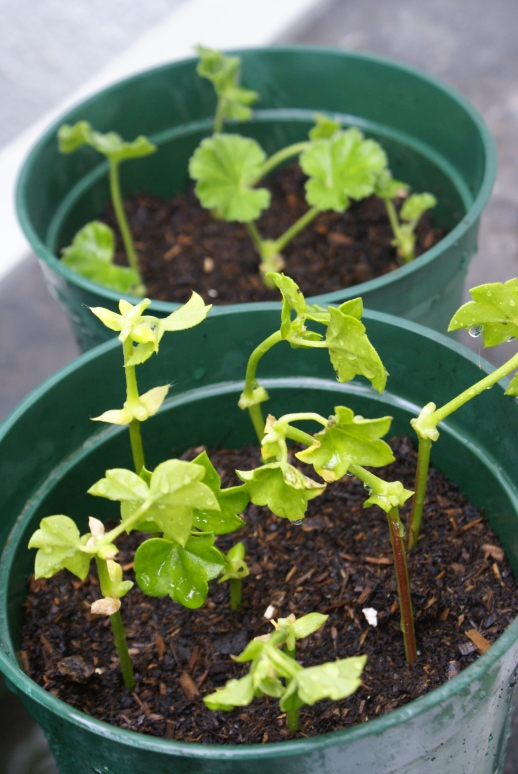I have a strange weakness for searing pinks. Not in my wardrobe, necessarily (I’ve tried, believe me, but it’s a difficult look to pull off) but my garden is peppered with little shocks of the sort of pinks that would make Barbie blush. These are very much not little-girl pinks, there is nothing sweet or sugar-coated about the pinks I love. I lean more towards what you might call a hot pink, or a Mexican pink, best teamed with a vibrant orange against a deep blue sky, but I do need to press my greenhouse into service to ensure I hang onto those I’ve found.

You will struggle to find such shades among sensible perennials, but there is one genus of plants I can always turn to when I need my bawdy fix: pelargoniums. You don’t have to look too far before you find properly shocking shades of pelargonium. Bred for eye-watering, crowd-pleasing colour and only very rarely for subtlety, pelargoniums (those plants commonly known as geraniums, which we may perhaps call ‘bedding geraniums’, to show we are in the know) are the plants with which I fill my veranda. In the past I’ve grown the appropriately named ‘Mexicana’, a trailing type with white petals edged in bold pink, like a hacienda window, and have grown them with something darker, such as trailing ivy-leaved ‘Tomcat’, a deep, burgundy red.
For that kind of pink can easily tip into nasty if it isn’t set off against something with a little more class, and a darker red is the perfect foil. This is why I leapt upon three plants I found in the local Buddhist shop window early in the summer. The flower is as brash and hot pink as you like, but the inner petal is a subtle shade darker and redder, just taking the edge off and giving the flower a little more gravitas. They have filled the veranda with Mexican splashes, all through this grey and miserable summer. When you find a pelargonium you like this much, you need to take measures to hang onto it, and this is the time to do it. Pelargoniums struggle over winter. They dont much like it indoors, where they get leggy and drawn because of the low light levels, suffer in the hot and dry air left by central heating and eventually become martyrs to spider mite, but they can’t take a frost and so will die if left outside.

My pelargonium survival plan is to take cuttings now, and root them on a heated mat in the mini greenhouse. They can live there all winter. The mat should just keep the frost off just enough, but not heat them up anything like central heating does. The mother plants can come inside and try their luck with the spider mite. The cuttings of my Buddhist zonal pelargonium are each about three inches long, all of the bottom leaves removed and pushed in around the edge of a large pot of compost. I have also taken cuttings of an ivy-leaved trailing kind (again with no name: it’s just one my mum was growing, which most probably could be said by most gardeners of most pelargoniums. Who needs names?). Being long, trailing types they require longer cuttings, each around four or five inches long. Books encourage us to dip these cuttings into hormone rooting powder, but I have none. Im sure it wouldn’t hurt if you have some knocking about, but really, pelargoniums are fairly eager to root.
I reckon this is as close as I can get to ensuring you hang on to these plants for next year. Cuttings in the mini greenhouse, plants indoors on the windowsill, perhaps one of the mother plants out in the main greenhouse with a bit of fleece thrown over the top. Wet and warm or deep frozen, whatever the winter throws at my bedding geraniums I hope to see their searing pink again next year.


